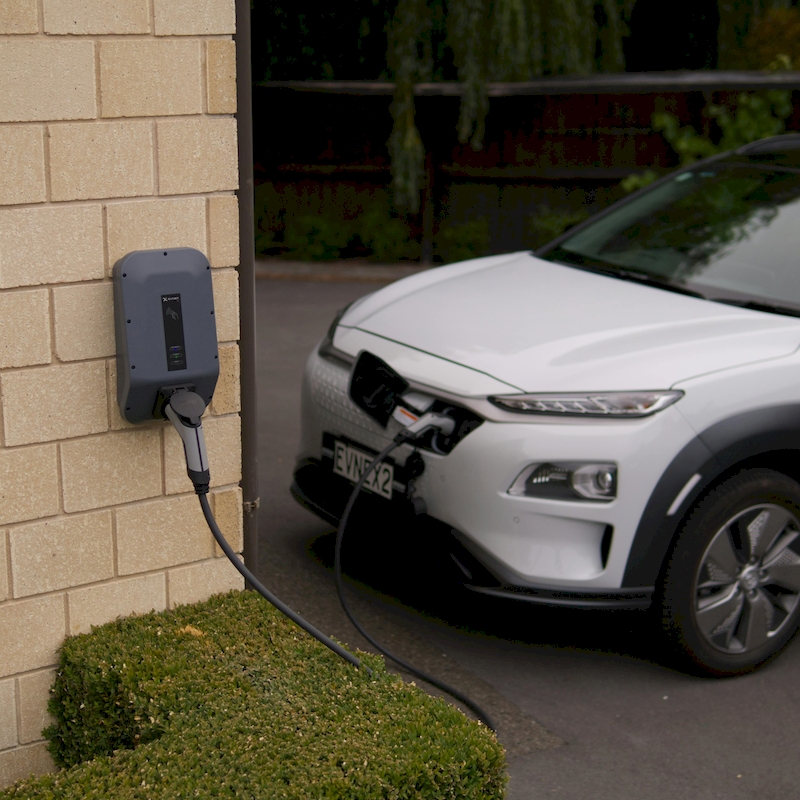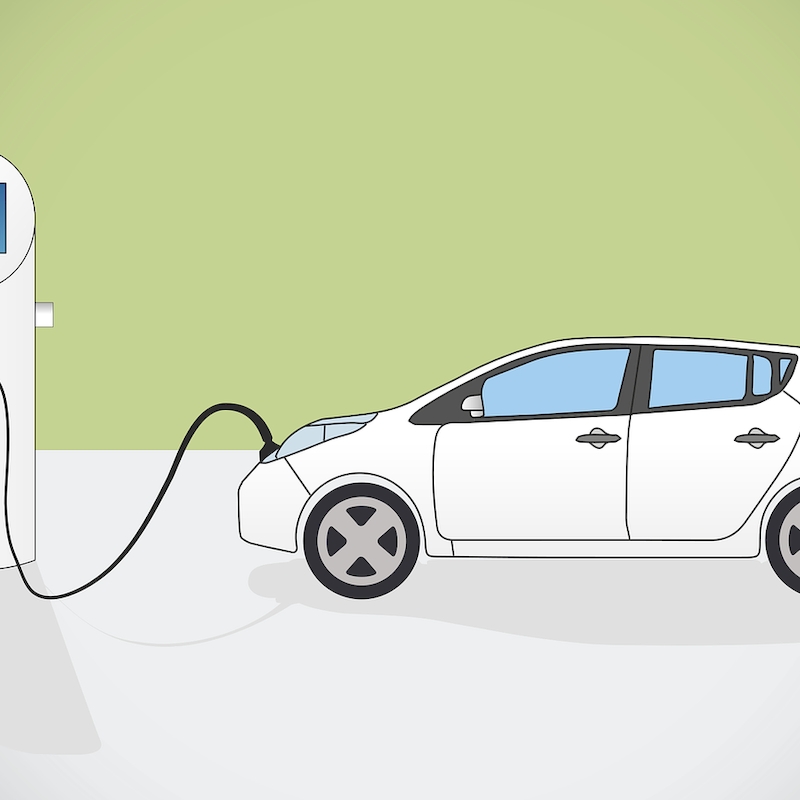As electric vehicles (EVs) become increasingly popular due to environmental concerns and advancements in technology, the necessity for convenient charging solutions has never been more paramount. Installing an electric vehicle charging station at home provides EV owners with the convenience of charging their vehicle overnight or during the day. This not only ensures that your car is ready for the next journey but also eliminates the anxiety associated with finding public charging stations. In this article, we will explore various aspects of installing an electric vehicle charging station at home, including types, benefits, costs, installation procedures, and considerations to ensure a successful setup tailored to your specific needs.

Understanding Electric Vehicle Charging Stations
Before diving into the details of installing an electric vehicle charging station at home. It’s crucial to understand what these charging stations are and how they work. There are three primary types of charging stations: Level 1, Level 2, and DC Fast Charging.
Level 1 charging is the most basic option, utilizing a standard 120-volt outlet. While the equipment costs are low and installation is straightforward. The charging speed is significantly slower, which may not be suitable for daily use.
Level 2 charging stations operate on 240 volts and provide much faster charging. They are the most commonly used type among EV owners looking to install a charging solution at home. This type often requires professional installation, including dedicated electrical services, but is perfect for overnight charging. Lastly, DC Fast Charging, typically found in commercial charging stations, offers rapid charging capabilities but is not practical for residential use due to higher costs and the need for specialized equipment.
Benefits of Installing an Electric Vehicle Charging Station at Home
The convenience of having an electric vehicle charging station at home goes beyond just ease of access. Here are some notable benefits:
Cost Savings: Installing an electric vehicle charging station can lead to substantial savings in fuel costs over time. Electric rates are often lower than gasoline prices, and you also have the option to charge during off-peak hours when electricity rates are reduced.
Increased Home Value: A home equipped with an electric vehicle charging station can increase its market value. As more people transition to electric vehicles, having a charging solution at home can be a significant selling point.
Convenience and Time Efficiency: For those who have busy schedules, charging your vehicle at home means you can plug in your car at night or whenever it’s not in use. This eliminates frequent trips to public charging stations and allows for efficient use of your time.
Reduced Range Anxiety: By installing an electric vehicle charging station at home, EV owners can mitigate the fear of running out of battery life. Knowing that you can charge your vehicle at home provides peace of mind, especially for longer trips.
Environmental Impact: Using electric vehicles is a more sustainable choice, significantly reducing greenhouse gas emissions compared to gas-powered vehicles. By installing a home charging station powered by renewable energy sources, such as solar panels, you can further minimize your environmental footprint.
Evaluating Costs Before Installation
When considering installing an electric vehicle charging station at home, it’s essential to evaluate the overall costs involved. Here are several factors that contribute to the total expenses.
Equipment Costs: Depending on the type of charging station you choose, costs may vary significantly. Level 2 chargers typically range from $500 to $2,000, while installation costs can add another $500 to $1,500 depending on the complexity of the installation.
Installation Charges: Hiring a qualified electrician is highly recommended to ensure the installation meets local codes and safety standards. Installation charges depend on the distance from the electrical panel. The requirement for new circuits, and any additional electrical work needed.
Permits and Inspection Fees: Many local regulations require permits and inspections for electrical installations. It is essential to check with your local building authority to ensure compliance, as fees may vary.
Potential Rebates: Many states and utility companies offer incentives for homeowners who install electric vehicle charging stations. Research local and federal programs to see if you qualify for any rebates that can significantly offset costs.
Long-term Savings: While the upfront costs can be significant, it’s crucial to calculate the long-term savings from reduced fuel costs and maintenance expenses associated with electric vehicles compared to gasoline counterparts.

Choosing the Right Charging Station
Selecting the appropriate electric vehicle charging station is a crucial step in the installation process. Several factors should be considered when making your decision:
Compatibility: Ensure that the charging station you select is compatible with your electric vehicle model. Most modern EVs utilize standard connectors, but it’s always prudent to confirm.
Charging Speed: Determine how quickly you need your vehicle charged. For most households, a Level 2 charging station provides the ideal balance between efficiency and cost. However, if you require rapid charging, DC Fast Charging, while not typically installed at home, might be an option if you have access to commercial solutions.
Smart Features: Many modern charging stations come equipped with smart features, allowing you to monitor and control charging via mobile apps, schedule charging during off-peak hours, and receive alerts. Consider these features for added convenience and potential energy savings.
Weather Resistance: If your installation is outdoors, it’s crucial to choose a charging station that is weather-resistant and durable. Look for models with a National Electrical Manufacturers Association (NEMA) rating suitable for outdoor use.
Costs: As discussed earlier, evaluating the cost of the charging station itself. Installation fees, and any ongoing fees associated with using the machine is essential before making a purchase.
The Installation Process: What to Expect
Installing an electric vehicle charging station at home requires several distinct steps. Here’s an overview of what you can expect during the installation process:
Site Assessment: A qualified electrician will conduct a site assessment to evaluate your current electrical system, determine the optimal location for the charging station, and ensure that it meets local codes and regulations.
Electrical Work: If necessary, your electrician may need to upgrade your electrical panel or install a dedicated circuit for the charging station. This may involve running new wiring, ensuring your home’s electrical capacity can handle the additional load.
Installation of the Charging Station: The electrician will then install the chosen charging station, including mounting it securely to a wall or post and connecting it to the electrical supply. They will ensure safety measures are in place, including proper grounding and compliance with local codes.
Testing and Instruction: After installation, the electrician will test the system to confirm its functionality and safety. They will also provide instructions on using the charging station, including any smart features, app connections, and best practices for charging your electric vehicle.
Final Inspection: In some cases, a final inspection may be required to certify the installation meets local safety codes and standards. Ensure you keep records of the installation for any potential future resale of your home.

Ongoing Maintenance and Troubleshooting
Once your electric vehicle charging station is installed, maintaining optimal performance is crucial for safety and efficiency. Here are some general guidelines for ongoing maintenance and troubleshooting:
Regular Inspections: Conduct periodic visual inspections of your charging station to check for any signs of wear, damage, or buildup of debris. Ensure that connections remain tight, and cables are free from fraying or wear.
Software Updates: If your charging station features smart technology or is connected to an app, ensure you keep the software updated as manufacturers release improvements and security patches.
Troubleshooting Charging Issues: If your charging station doesn’t function as expected, consult the manufacturer’s manual for troubleshooting steps. Many common issues can be resolved through simple resets or adjustments.
Professional Servicing: If your charging station requires repairs or has persistent issues, don’t hesitate to contact a qualified technician. Ensuring any repairs are handled by professionals can prevent safety hazards and ensure proper functionality.
Alert System: Many modern systems feature alert systems that notify you of faults or issues with function. Stay connected to these alerts to catch and resolve issues promptly.
Conclusion
Installing an electric vehicle charging station at home not only enhances the convenience of owning an electric vehicle but also contributes positively to your energy costs and environmental impact. By evaluating your options, understanding the costs, and selecting the right installation service, you can ensure that your electric vehicle is always charged and ready to go.
This investment not only signifies a commitment to sustainability but also increases your property value and offers peace of mind with enhanced charging capabilities. As the world shifts towards green technology, having an electric vehicle charging station in your home is not just an advantage but a step towards a more sustainable future. Prepare yourself for this progressive change, and enjoy the benefits it brings right from your driveway.



